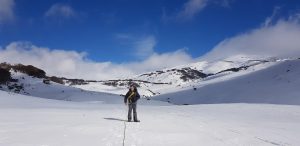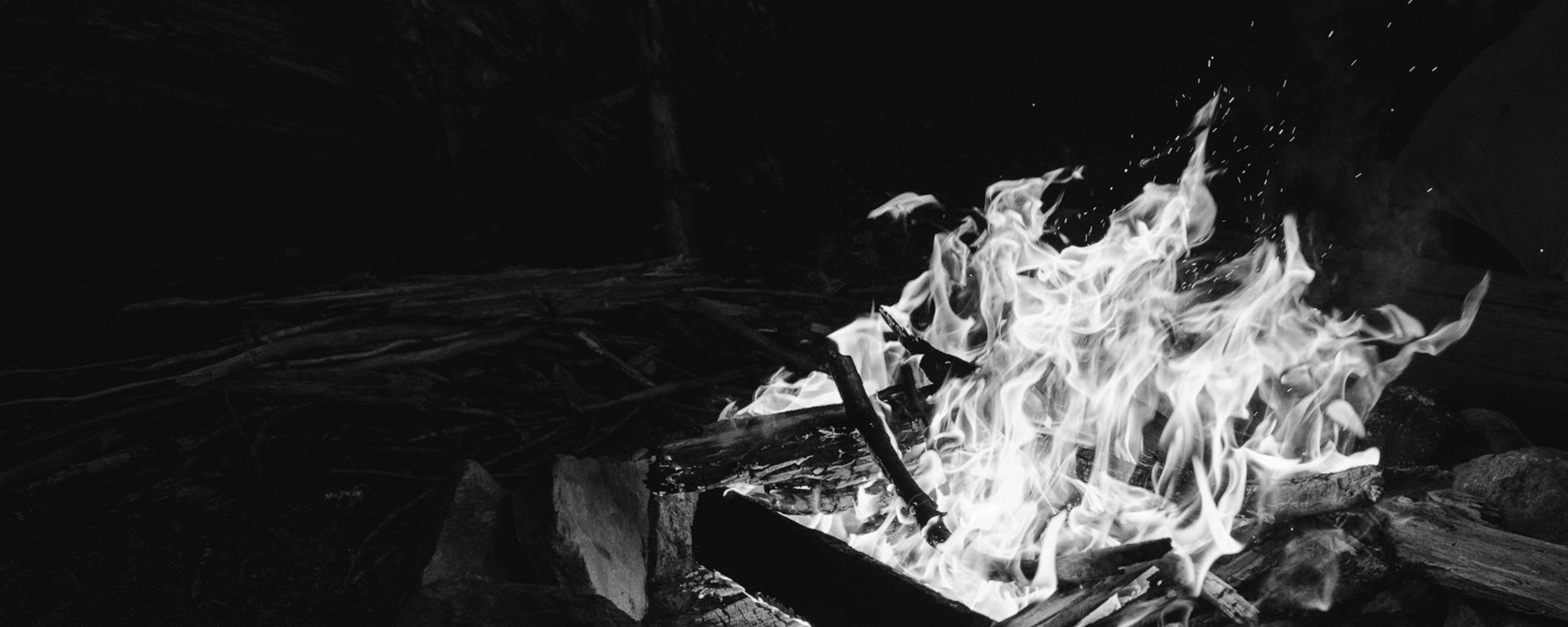24 Oct Backcountry camping in Kosciuszko National Park

Yes, we are well into spring so it doesn’t feel like skiing weather anymore (well in Australia anyway). If you missed out this year make next year your year to get some back country camping under your belt! It helps practice an essential plethora of skills; route finding, gear systems, food planning, tent administration and self care in cold climates. It also helps build a great base for other alpine and expedition adventures. Bonus points? It’s a cheap local getaway from the city which helps satiate that crave for adventure.
A couple of Basecampers took a weekend out and headed into the snow. With the objective to get to and camp at Blue Lake, here’s what they learnt:
The Ten Essentials
The Mountaineers (a group of volunteers) formalised the Ten Essentials in 1974, when the iconic list debuted in the third edition of “Mountaineering: The Freedom of the Hills.” It’s been revised to the 10 Essential Systems. These are the backbone of any wilderness trip which must be considered and planned for. They are:
- Navigation
- Illumination
- Sun protection
- First-aid supplies
- Knife, Repair kit and tools
- Fire
- Emergency shelter
- Insulation (extra clothing)
- Nutrition (extra food)
- Hydration (extra water)
Pre-Trip Planning
Winter camping offers oodles of new challenges that differ from it’s sunny summer counterpart. There are shorter days, white out weather and a whole new wardrobe to consider. Before you jump in the car, think about;
- The team. It’s recommended to never go less than three on an expedition trip. Killian Jornet would go solo, and we only had two, so depending on the objective, your skill level and level of risk tolerance.
- Talk to people who have been there and can give you pointers. For example, Charlottes Pass Parking. There is none in winter. Actually they close the road up to Charlottes Pass. Apparently we were the only ones who didn’t know. Gather some beta before heading out so your planning can match the execution.
- Check the weather forecast. Are conditions stable? Did you want to practice that white out navigation to the next camp unexpectedly?
- Check the local road and trail conditions. Do you have all season tyres, need chains?
- Recognize and avoid avalanche areas. Kosciuszko is not renowned for avalanches, but any snow alpine regions have them, and it goes without saying, knowing the recent snow conditions, fall zones and prone areas is a must. Check the local avalanche forecast and don’t go if avalanche danger is high. Keep in mind that avalanche forecasts may be general and not accurate for specific areas. If you are on or near any slope greater than 20°, your group should have formal avalanche training.
- Leave a trip plan. Tell your mum where you’re going to be and what time to expect a call from you when you finish your trip.
- Make sure everyone in the group has the same plans, expectations, turnaround times and goals.
Getting to the Campsite: Snowshoeing
Snowshoes offer the easiest and least expensive way to travel in snow. We hired ours at forty bucks each for the weekend at a Jindabyne ski hire shop. Snowshoes disperse your weight over a large surface area, thus providing a degree of flotation that reduces the amount you sink into soft snow. Snowshoes provide good traction for climbing, traversing and descending slopes. They also work better than skis in areas of closely spaced trees or in brushy or rocky areas. I was an easy and no-experience-required way to get to our camp ground.

Route Finding in Winter
Excess snow, bad weather or a rarely used route may hide the trail and/or your destination. Before heading out, make sure everyone in your group has a good map and route description. Study your map and plot your compass bearings in advance so you know what terrain to expect. Beware of simply following someone else’s tracks, as this person may not know where he or she is going! Plan and follow a safe route. Avoid cornices, snow-covered rivers and lakes, snow bridges, hidden holes next to logs and rocks, tree wells, rockfall and avalanche zones.
Setting up Camp
Make sure you start your hike or drive early enough to reach your destination with time to spare. At Kosciuszko we had a delay to start with a change of plans. From starting at Charlottes Pass, (with the road closure) we instead doubled around to commence the hike from Guythega. The extra three hours meant we couldn’t make it to Blue Lake before sundown. On route to Blue Lake we stumbled upon a beauty of a camp spot, where some people had spent hours building a level platform, and snow brick walls to shelter from the wind. If you can be opportunistic, why not?! We camped there instead of completing the objective to Blue Lake, where we would have arrived in the dark a little knackered
Winter campsite considerations:
- Is there natural wind protection?
- Is there a good water source nearby—or will you need to melt snow?
- Is the site free of avalanche danger?
- Is it reasonably safe from falling trees and branches?
- Does it give privacy to and from other campers?
- Are there landmarks to help you find the camp in the dark or a snowstorm?
- Where will the sun be in the morning? A sunny spot will help you warm up faster.
In patchy snow conditions, set up camp on the snow or an established campsite of bare ground and no plant life. Always practice Leave No Trace camping ethics.
Tent administration
When there are two people, their winter gear, sleeping bags, food, shoes and other assortment of personal parafunalia a tent gets pretty small pretty quickly. Tent administration is a personal practice, which just means being organised so you know where items and gear is, and are efficient at task execution. For example, putting a brew on (boiling hot water) whilst you set your bed up, so when you have finished making your bed (blowing up the mattress, and unrolling your sleeping bag), the tea is ready!

Tips
- Warm gas up under your armpit/in your puffy, so the gas burns effectively.
- Go for a ten minute walk before you finally snuggle up in the sleeping bag. It warms you up so you can sleep, and you can do that final pee stop.
- Put boiling water in a nalgene and make it a hot water bottle/ready luke warm water upon your awakening
- Pee bottle, have it, use it, rejoice it’s glory of not getting out of your sleeping bag at night. (It’s an art and requires practice)
- Have a hot carby meal before bed. It will also help you sleep.
- Keep your head torch on the floating shelves at the top of the tent so you always know where to get light when you need it.
- Layer your Gortex under your sleeping pad for an extra layer between snow and you.
- Get into the habit of putting your gear in the same spot each time. It’s always a personal choice, but having a place for everything and everything in it’s place makes you less stressed, faffy (to the benefit of your team mates) and in an emergency it can save your butt.
This is a brief, basic and hopefully tantalising snapshot of back country camping at Kosciuszko. Have you got any other great tips that you have gleaned from winter camping in the Aussie alps? If so let us know below!



No Comments